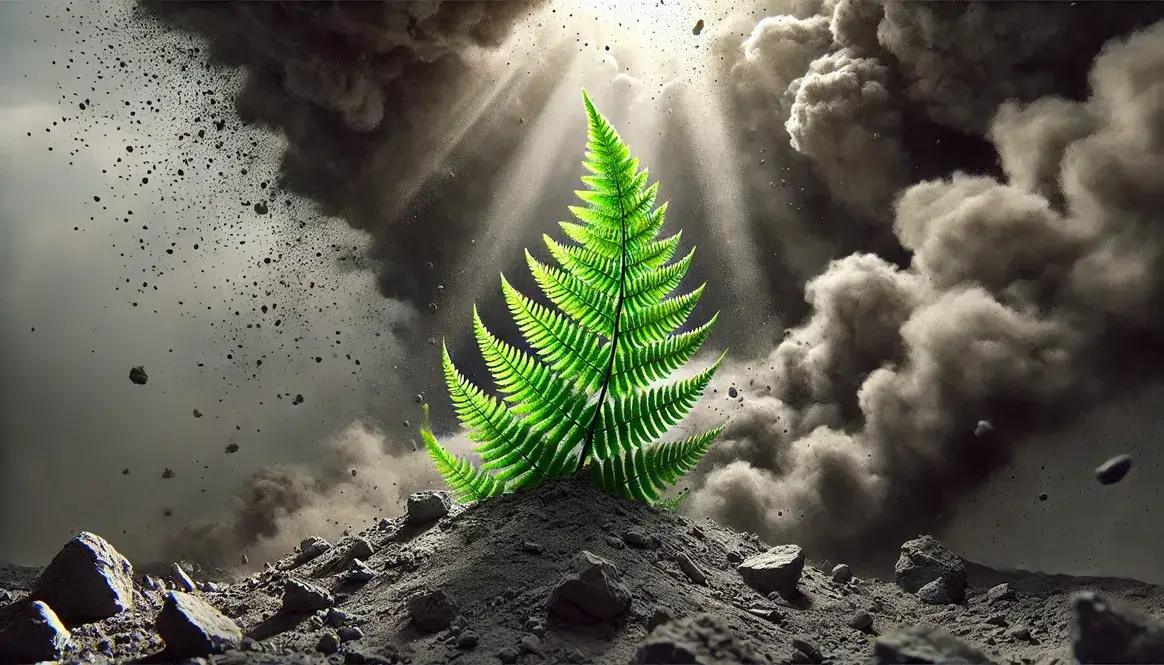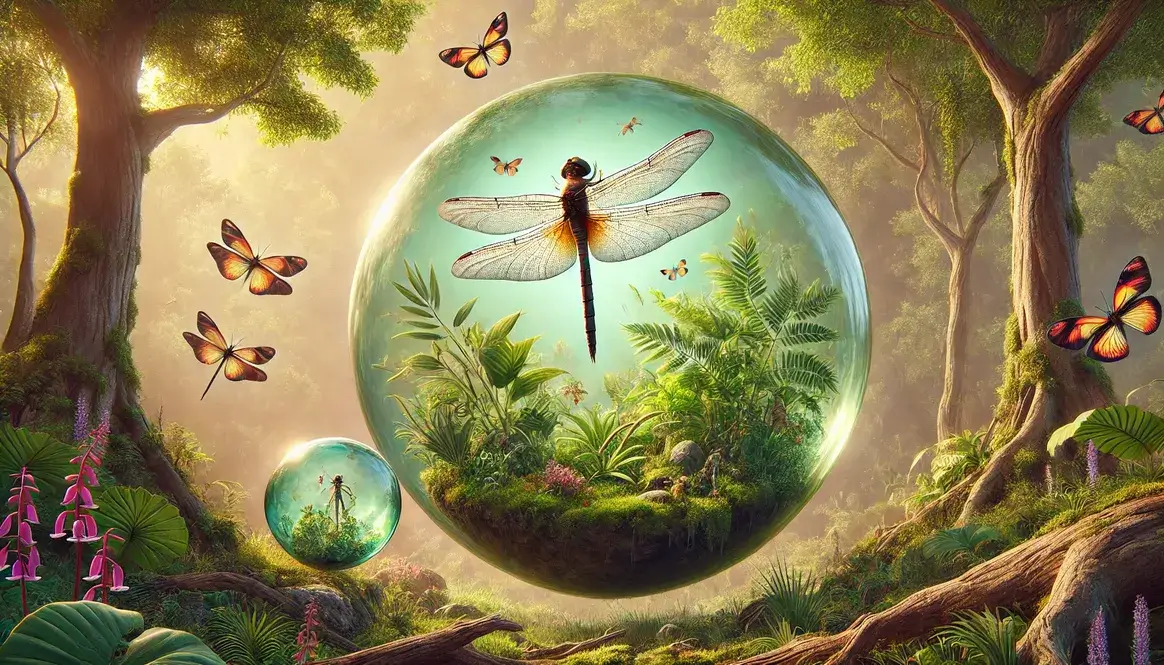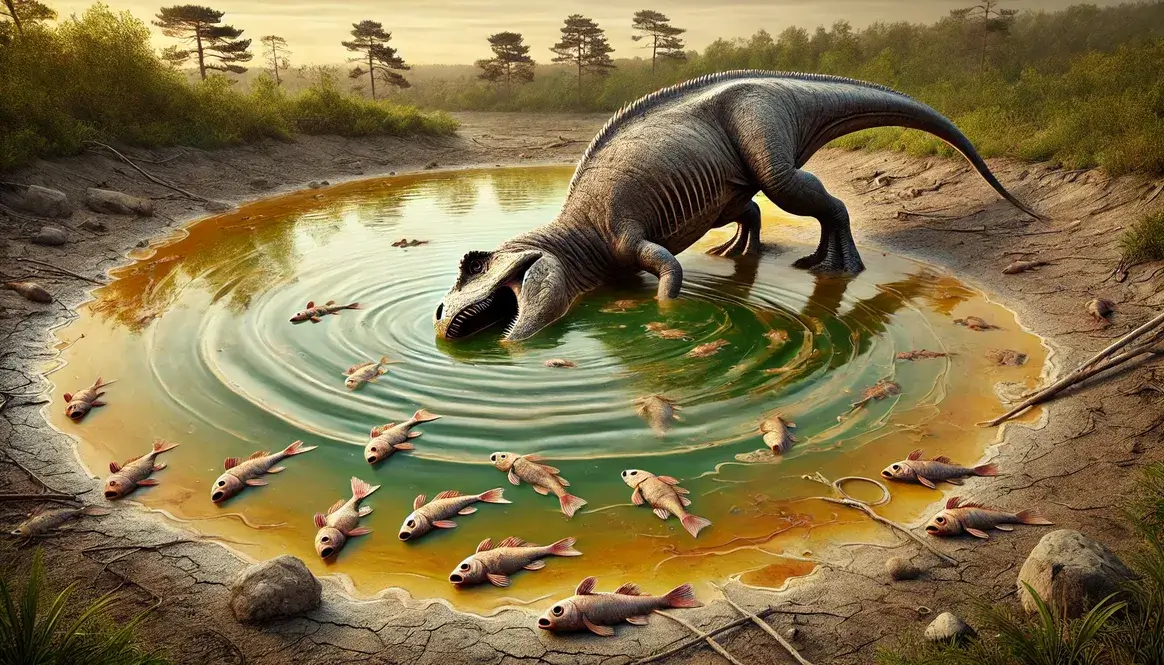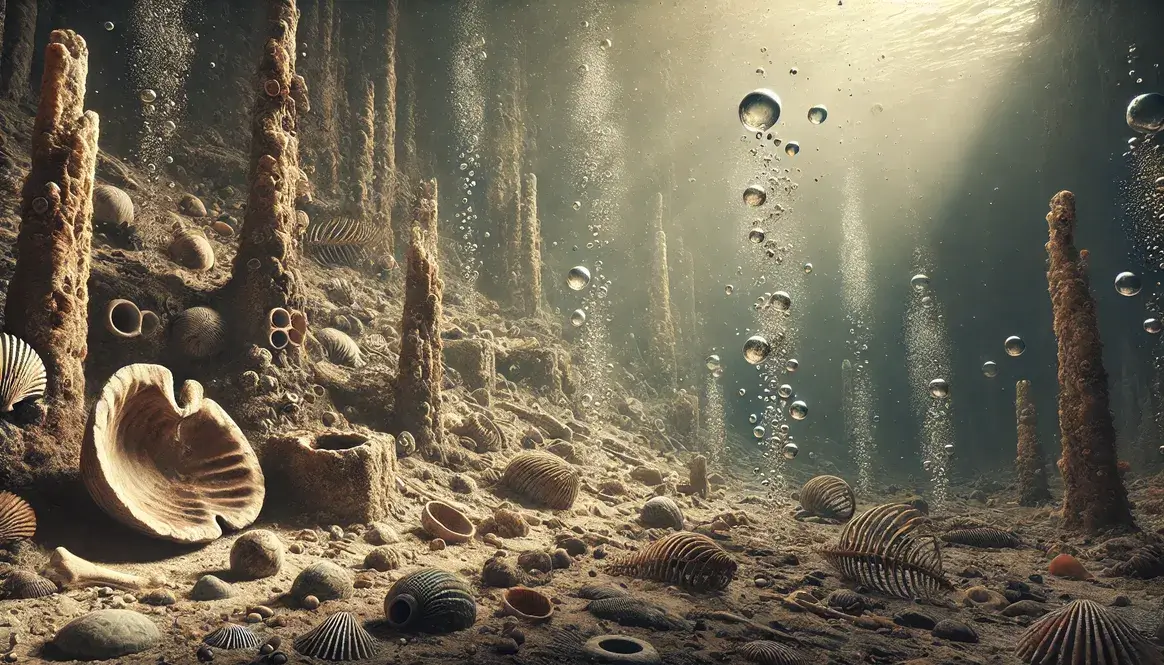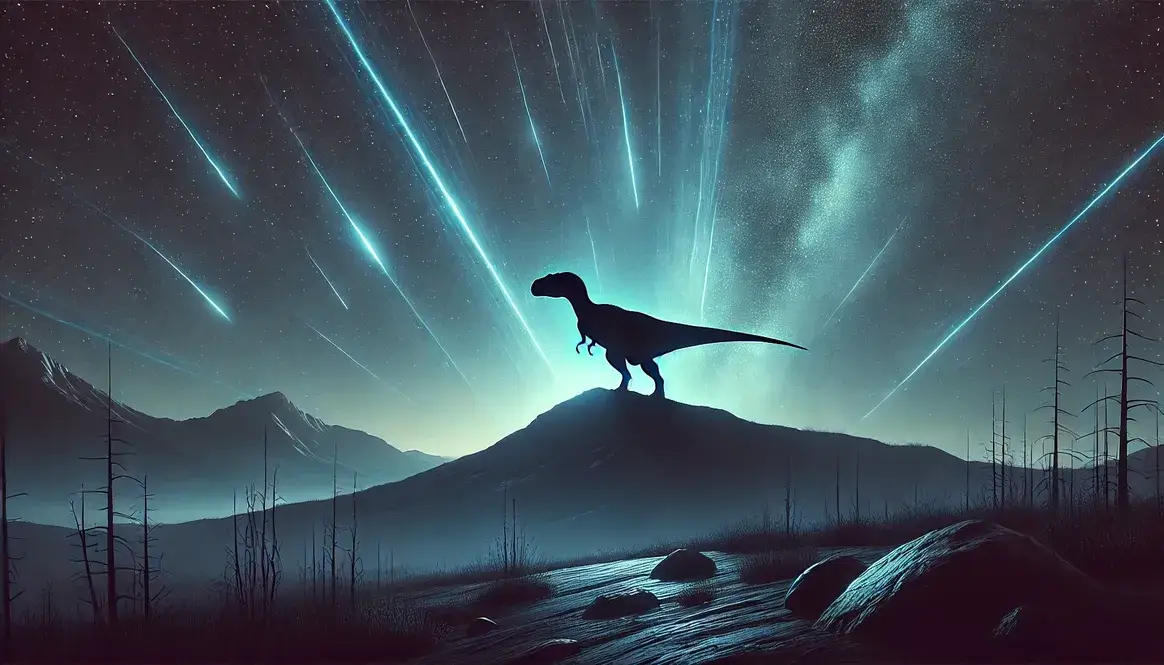The story of plant survival during the extinction reveals an incredible tale of endurance. Many people ask “did plants die with dinosaurs?” and the answer shows nature’s resilience – while many plants vanished, others found ways to survive through seeds, spores, and roots – even in complete darkness. The extinction changed Earth’s plant life forever, but some plants made it through this challenging time.
| Plant Group | Survival Rate | Key Survival Factors |
|---|---|---|
| Ferns | 90% | Tough spores, quick reproduction |
| Flowering Plants | 65% | Seeds, varied growing patterns |
| Conifers | 80% | Strong seeds, widespread distribution |
| Cycads | 50% | Thick bark, deep roots |
The Mass Extinction That Changed Earth
66 million years ago, an asteroid struck Earth near what is now Mexico’s Yucatan Peninsula. This impact marked the end of the Cretaceous Period and changed life on Earth forever. The collision created a blast more powerful than millions of nuclear bombs, sending dust and debris high into the atmosphere.
Think of what happens when you shake a snow globe – but instead of snow, the air filled with thick dust that blocked out the sun. This darkness lasted for months. Without sunlight, temperatures dropped rapidly across the planet. Many animals, including most dinosaurs, died out during this time.
But this was just the start. The impact also triggered:
- Massive wildfires that burned forests worldwide
- Acid rain that poisoned water sources
- Extreme temperature swings from hot to cold
- Chemical changes in the air and oceans
These events set the stage for one of the biggest changes in plant life Earth has ever seen. Different types of plants faced different chances of survival, depending on their features and where they lived.
Did Plants Die with Dinosaurs?
Unlike the massive food chain collapse that killed most dinosaurs, many plants survived the extinction event. While some plant species died out completely, others managed to survive and later spread across Earth again.
The extinction affected different plant groups in varying ways:
| Plant Type | What Happened | Recovery Time |
|---|---|---|
| Forest Trees | 57% died out | 1,000+ years |
| Small Plants | 21% died out | 100-200 years |
| Water Plants | 33% died out | 300-400 years |
The survival rate of plants was much higher than that of large land animals. When we look at the numbers:
- About 75% of all plant species survived
- Only 25% of plant families disappeared forever
- Nearly all plant groups had at least some survivors
This survival rate stands in sharp contrast to land animals, where many groups vanished completely. The dangerous conditions that proved fatal for dinosaurs were less deadly for plants, mainly because plants had special features that helped them survive:
- Seeds that could stay dormant for years
- Underground parts that could regrow
- Ability to reproduce quickly when conditions improved
- Tough protective structures
Some regions saw more plant deaths than others. Areas closer to the asteroid impact site lost more plant species than regions farther away. Places with natural shelters, like deep valleys or caves, helped protect some plants from the worst effects of the extinction event.
Why Some Plants Survived While Others Didn’t
While ancient oxygen levels played a role in plant survival during the extinction, certain plant characteristics proved even more important. The plants that made it through the extinction had special features that let them wait out the bad conditions.
Plant Features That Helped Survival
Think of these surviving plants like a camper with a really good survival kit. Just as a camper needs different tools for different situations, plants needed various features to survive the extinction. Here are the main ways plants protected themselves:
Tough Seeds and Spores Seeds and spores acted like natural time capsules. Some could stay alive but dormant for years, waiting for better conditions. When the skies finally cleared and temperatures improved, these seeds sprouted and started growing again.
Underground Survival Systems Many plants had parts that grew underground:
- Root systems that stored food
- Bulbs that could stay dormant
- Tubers that could regrow into new plants
- Rhizomes that spread underground
These underground parts protected plants from:
- Extreme temperature changes
- Lack of sunlight
- Acid rain
- Fire damage
Quick Growth and Adaptation Plants that survived often shared these traits:
- Fast reproduction rates
- Ability to grow in poor soil
- Tolerance for different temperatures
- Multiple ways to spread seeds
Small, fast-growing plants had an advantage because they could complete their life cycles quickly when conditions improved. Ferns, for example, could spread rapidly using millions of tiny spores once the environment became more favorable.
These survival features worked like a natural insurance policy. Even if most of a plant species died, a few survivors could regrow and spread when conditions improved. This ability to bounce back helped Earth’s plant life recover much faster than many animal groups.
Plant Groups Hit Hardest
Not all plants had equal chances of survival. Some types were hit much harder than others, similar to how methane changes affected different animals differently during the extinction event.
Most Vulnerable Plant Types:
| Plant Type | Reason for High Losses |
|---|---|
| Tall Trees | Exposed to acid rain and temperature extremes |
| Aquatic Plants | Affected by water chemistry changes |
| Specialized Plants | Relied on specific growing conditions |
| Single-habitat Species | Couldn’t adapt to new environments |
Plants growing in certain places suffered more than others. Areas close to the impact site in North America lost up to 90% of their plant species. The destruction spread outward like ripples in a pond, with less damage in places farther from the impact.
Some examples of plant casualties include:
- Large-leafed flowering plants
- Many types of palm trees
- Most floating water plants
- Plants that needed specific insects for pollination
Plants in tropical areas faced bigger challenges because they weren’t used to temperature changes. Many couldn’t handle the sudden cold. Meanwhile, plants already growing in challenging environments, like Arctic regions, often had better survival rates because they were used to tough conditions.
The worst-hit areas were:
- North American forests
- Central American jungles
- Coastal wetlands
- Shallow water environments
Some plant types disappeared from entire continents, only surviving in small protected areas. These survival hotspots, often in deep valleys or remote islands, became important for later recovery.
The Impact Chain: From Space Rock to Plant Death
The asteroid impact started a chain of events that changed Earth’s environment completely. While some scientists have studied whether cosmic rays harmed ancient life, the impact itself caused more immediate problems for plants.
Direct Effects on Plant Life
Picture a world where the sun disappeared for months. This is what happened after the asteroid hit Earth. Dust and soot filled the sky, blocking sunlight from reaching plants. Without sunlight, plants couldn’t make their food through photosynthesis.
The effects came in waves:
First Wave: The Dark Period
- Sunlight dropped to less than 1% of normal levels
- Photosynthesis nearly stopped worldwide
- Plants began using stored food to survive
- Many plants went dormant
Second Wave: Temperature Swings
- Initial heat pulse from the impact
- Sudden drop in temperatures worldwide
- Years of colder-than-normal weather
- Random periods of extreme heat
These temperature changes forced plants to deal with conditions they’d never experienced before. Many couldn’t adapt fast enough.
The third major problem was acid rain. The impact released chemicals into the air that mixed with water to form acid rain. This rain:
- Damaged plant leaves and stems
- Changed soil chemistry
- Poisoned water sources
- Killed sensitive species
The combination of darkness, temperature changes, and acid rain created conditions that no plant had ever faced before. Only the toughest species, or those with special survival features, made it through this difficult time.
Changes in the Air and Soil
Just as ancient diseases affected dinosaur populations, changes in air and soil created tough conditions for plants. These changes transformed Earth’s environment at every level.
The air became filled with:
| Element | Source | Effect on Plants |
|---|---|---|
| Sulfur | Impact rock vaporization | Made rain highly acidic |
| Carbon dioxide | Worldwide fires | Changed air composition |
| Dust particles | Impact debris | Blocked sunlight |
| Nitrogen oxides | Impact heat effects | Created toxic conditions |
Soil changes were just as severe. The asteroid impact spread a layer of debris across much of Earth. This new soil layer contained unusual amounts of metals and minerals. Many plants couldn’t grow in this changed soil because:
- Their roots couldn’t absorb nutrients properly
- Soil became too acidic
- Helpful soil bacteria died
- Metal levels became toxic
Water became a big problem too. Even in places with plenty of rainfall, plants struggled because:
- Acid rain changed water chemistry
- Toxic metals polluted water sources
- Temperature changes affected water availability
- Many water sources dried up
The combination of bad air, poor soil, and water problems meant that even places that looked good for plant growth became harsh environments. Plants needed special features or lucky circumstances to survive in these changed conditions.
A Changed World for Plants
After the extinction, plants faced a world without many of their usual partners. The loss of large plant-eating dinosaurs changed how plants grew and spread across Earth.
Missing Plant-Eaters
When the early mammals survived the extinction, they were much smaller than the dinosaurs they replaced. This size difference mattered a lot for plants. Here’s why:
Changes in Plant Growth Patterns:
- No more super-tall trees (nothing ate the top branches)
- Thick forests became more common
- Plants grew closer together
- Less trampling created denser undergrowth
The biggest change came in how plants spread their seeds. Large dinosaurs used to eat fruits and plants, then spread seeds through their droppings across long distances. Without them:
| Old Way (With Dinosaurs) | New Way (After Extinction) |
|---|---|
| Seeds spread many miles | Seeds stayed closer to parent plants |
| Quick spread to new areas | Slower spread to new places |
| Wide distribution patterns | More clustered growth |
| Large fruits common | Smaller fruits became normal |
Some plants found new ways to spread. Wind-carried seeds became more important. Smaller animals like birds and early mammals helped move seeds around, but they couldn’t travel as far as large dinosaurs once did.
But this change also created opportunities. Plants that could spread without help from large animals had advantages. Some plants developed new features:
- Lighter seeds that could float on wind
- Sticky seeds that attached to fur
- Harder seed cases that lasted longer
- More seeds per plant
These changes shaped how forests and grasslands look today. The extinction of dinosaurs didn’t just change which plants lived – it changed how they grew and spread across Earth.
New Plant Communities
The extinction created spaces for new types of plant communities to form. Unlike the situation where fragile dinosaur eggs limited species survival, plants had many ways to spread and recover.
First Wave of Recovery Plants Ferns led the way in recovery. These plants spread quickly using tiny spores that could travel far on the wind. They grew in places where other plants couldn’t survive yet. Scientists call ferns “pioneer species” because they’re often the first to grow in damaged areas.
The new plant communities formed in stages:
| Stage | Time After Extinction | Main Plant Types |
|---|---|---|
| Early | 1-1,000 years | Ferns, mosses, small plants |
| Middle | 1,000-10,000 years | Small trees, shrubs |
| Late | 10,000+ years | Modern forest types |
Flowering plants became more successful than ever before. They could:
- Produce many seeds quickly
- Adapt to different environments
- Work with insects for pollination
- Grow in various sizes and shapes
The world saw other big changes in plant life:
- More plants growing close to the ground
- Faster-growing species became common
- Plants that could handle poor soil spread widely
- New types of forests developed
These new plant communities created the foundation for modern Earth’s plant life. While some ancient plant types never returned, the new combinations of plants created forests and grasslands that would eventually spread across all continents.
The Plant Recovery Story
Nature’s recovery after the extinction shows how life finds ways to return. Just as Earth recovered from other challenges like sudden changes in its atmosphere, plants began their comeback as soon as conditions allowed.
First Plants to Return
The first signs of plant recovery appeared in different places at different times. Areas farther from the impact site saw plants return sooner. The recovery followed clear patterns:
Early Pioneer Plants:
- Ferns spread first using their lightweight spores
- Small flowering plants with quick life cycles
- Plants that could grow in damaged soil
- Species that didn’t need much water
These early plants had an important job. They helped fix the soil and create conditions where other plants could grow. Here’s what they did:
| Pioneer Plant Action | Effect on Environment |
|---|---|
| Root growth | Broke up hard soil |
| Dead plant matter | Created new soil layers |
| Soil stabilization | Prevented erosion |
| Nitrogen fixing | Improved soil chemistry |
Different regions saw different recovery patterns:
- Polar areas: Slower recovery but steady
- Tropical zones: Quick bursts of new growth
- Middle latitudes: Mixed recovery rates
- Coastal areas: Fast recovery near water sources
The first plants to return weren’t always the most impressive, but they were the toughest. They could handle poor conditions and helped make the environment better for other plants that would come later.
Building New Forests
After the pioneer species prepared the ground, larger plants began to return. The rebuilding of forests happened slowly but steadily, creating new types of woodlands different from those of the dinosaur age.
Forest Recovery Timeline:
- Years 1-100: Ground cover and small plants
- Years 100-1,000: First small trees appear
- Years 1,000-10,000: Young forests develop
- Years 10,000+: Modern-type forests form
The new forests were different from the old ones in several ways:
| Old Forests (Before) | New Forests (After) |
|---|---|
| Very tall trees | Medium-height trees |
| Fewer types of trees | More tree variety |
| Wide spaces between trees | Denser tree growth |
| Less ground cover | Rich undergrowth |
As these forests grew, they created homes for new types of animals. The changes included:
- More flowering plants
- Greater variety of tree sizes
- New types of fruit and seeds
- Different leaf shapes and sizes
Some of these changes helped create the forests we know today. Modern rainforests, deciduous woodlands, and pine forests all trace their beginnings to this recovery period. While different from the forests that dinosaurs knew, these new woodlands proved perfect for the animals that survived and evolved after the extinction.
The development of new forests shows how nature can rebuild after even the worst disasters. Though many plants died with the dinosaurs, the survivors created new and successful ecosystems that still thrive today.
The Legacy of Plant Survival
The story of plants during the great extinction teaches us something remarkable about life on Earth. While many plants died when the dinosaurs did, others survived and thrived, creating the green world we know today. Their survival shows that even in the worst conditions, life finds ways to continue and adapt.
The plants that lived through this time became the ancestors of many species we see in modern gardens, forests, and parks. They proved that being tough, adaptable, and sometimes just lucky can make the difference between extinction and survival.
By studying how plants survived when dinosaurs didn’t, we learn how species can endure massive changes in their environment. This knowledge helps us understand how modern plants might handle big changes in their world too.

